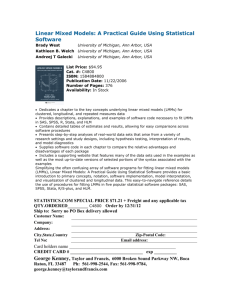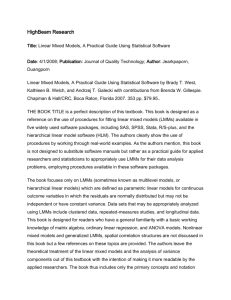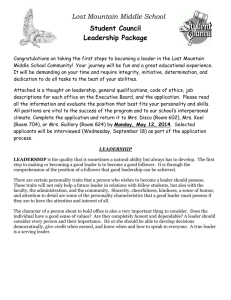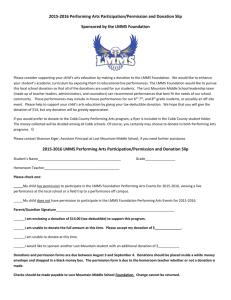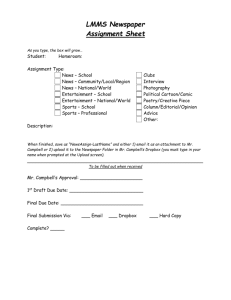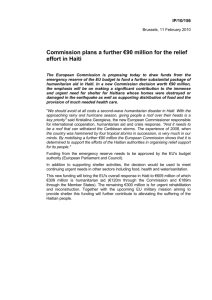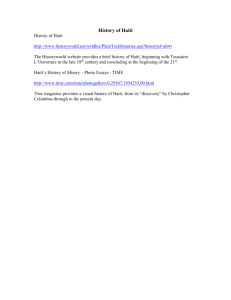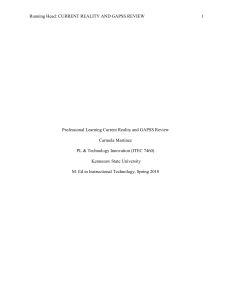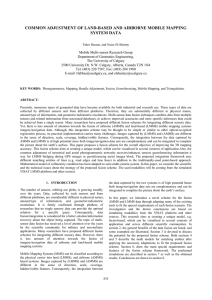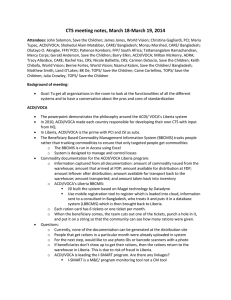Last Mile Mobile Solutions in the Haiti Earthquake Response
advertisement
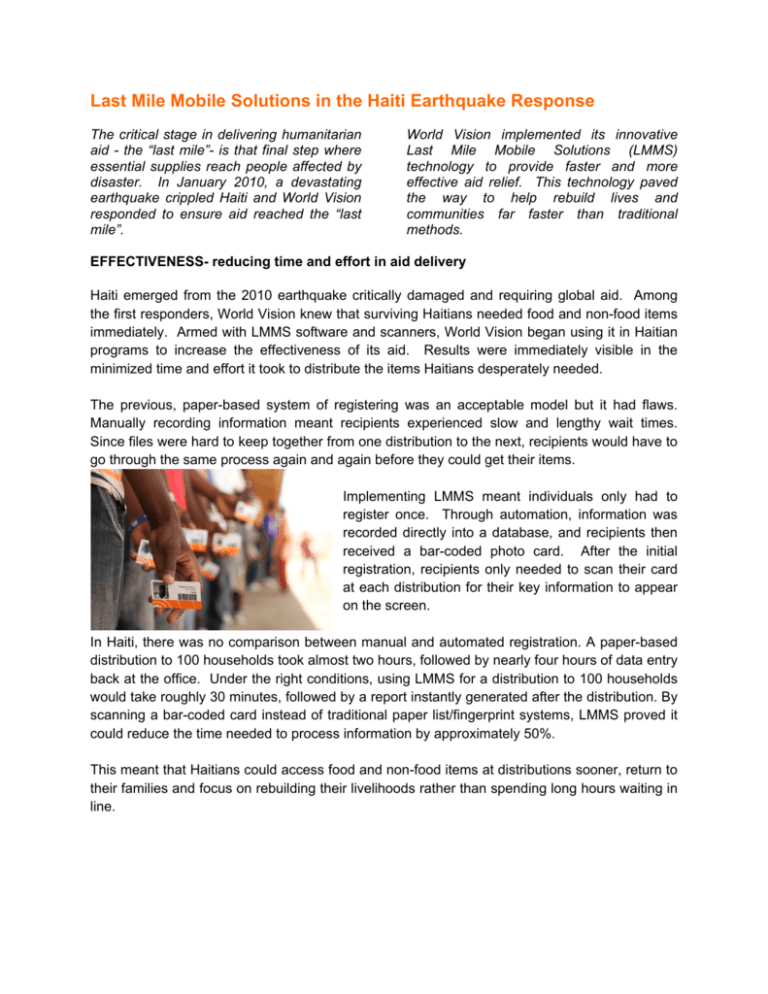
Last Mile Mobile Solutions in the Haiti Earthquake Response The critical stage in delivering humanitarian aid - the “last mile”- is that final step where essential supplies reach people affected by disaster. In January 2010, a devastating earthquake crippled Haiti and World Vision responded to ensure aid reached the “last mile”. World Vision implemented its innovative Last Mile Mobile Solutions (LMMS) technology to provide faster and more effective aid relief. This technology paved the way to help rebuild lives and communities far faster than traditional methods. EFFECTIVENESS- reducing time and effort in aid delivery Haiti emerged from the 2010 earthquake critically damaged and requiring global aid. Among the first responders, World Vision knew that surviving Haitians needed food and non-food items immediately. Armed with LMMS software and scanners, World Vision began using it in Haitian programs to increase the effectiveness of its aid. Results were immediately visible in the minimized time and effort it took to distribute the items Haitians desperately needed. The previous, paper-based system of registering was an acceptable model but it had flaws. Manually recording information meant recipients experienced slow and lengthy wait times. Since files were hard to keep together from one distribution to the next, recipients would have to go through the same process again and again before they could get their items. Implementing LMMS meant individuals only had to register once. Through automation, information was recorded directly into a database, and recipients then received a bar-coded photo card. After the initial registration, recipients only needed to scan their card at each distribution for their key information to appear on the screen. In Haiti, there was no comparison between manual and automated registration. A paper-based distribution to 100 households took almost two hours, followed by nearly four hours of data entry back at the office. Under the right conditions, using LMMS for a distribution to 100 households would take roughly 30 minutes, followed by a report instantly generated after the distribution. By scanning a bar-coded card instead of traditional paper list/fingerprint systems, LMMS proved it could reduce the time needed to process information by approximately 50%. This meant that Haitians could access food and non-food items at distributions sooner, return to their families and focus on rebuilding their livelihoods rather than spending long hours waiting in line. STRENGTHENED EFFECTIVENESS – finding other streams to incorporate technology The initial use of LMMS technology was to get food supplies to those in chronic emergencies. In Haiti, LMMS was adapted to also provide non-food items and cash-for-work distributions for livelihood programming. Cash-for-work programs provided substantial opportunities for people rebuilding in the wake of a disaster. Previously, cash distributions were difficult and dangerous for non-government organizations, especially in urban Haiti. LMMS and automation erased the need for cash transactions and instead, focused on getting the appropriate funds into the recipient’s bank account through digital transfers. The first paperless cash-for-work distribution took place in February 2011 and ration calculations, recipient verification, and signature receipts were all done using technology. These developments reduced the security risks associated with physical cash distributions and increased the efficiency of World Vision’s humanitarian interventions. ACCOUNTABILITY— increasing transparency of humanitarian activities LMMS proved valuable in delivering aid timely and effectively, but it also became an important tool for World Vision’s other functions. This technology increased accountability to donors, allowed for consolidation of data across all projects and grants, and managed aid inventory before, during and after a distribution. Reports produced immediately after registrations and distributions provide a clear picture of how money and resources are utilized. Donors can see the impact their donations are having and that transparency helps strengthen future donor relations. As well, when applying for grants, World Vision can incorporate the valuable data LMMS provides on past programs. These solid statistics show the successful work World Vision does and increases the likelihood of receiving future grants to continue programming. Better information management means better management for aid supplies. The ability to track the inventory of stock removes any margin of error when distributing the aid and ensures the right supplies get to the right recipients. This is hopefully only the beginning for LMMS – eventually more program templates can be specialized for different programs and sectors (e.g. tracking child nutrition data). LMMS has the potential to provide a unified system in which multiple non-government organizations can access joint registration information and shared data. This will ensure stronger collaboration, less duplication of resources, more accountability, and more efficient use of time.

